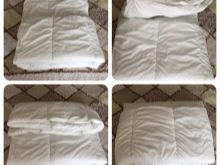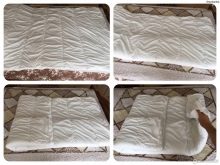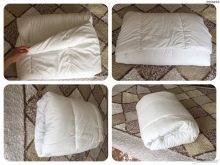All about blankets
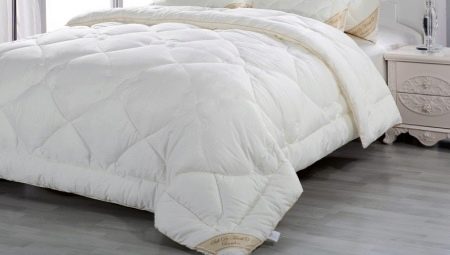
A blanket is a piece of furniture that every home needs. Today the product is presented in different types, shapes and fillings. Any person can afford it, regardless of their social status. Choosing the right blanket will ensure a healthy and sound sleep, as well as guarantee protection from cold and overheating. There are many types of blankets from different manufacturers, which will allow you to choose a model for your special wishes.

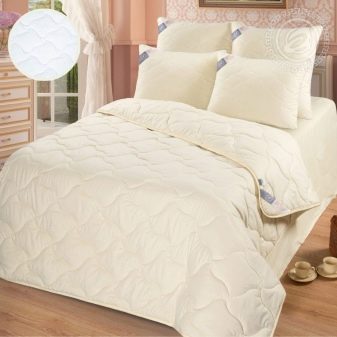
What it is?
A blanket is a sleeping accessory. It comes in different shapes, materials and fillers. Today you can find both a free product and in a special case. They are distinguished not only by filler (wool, cotton, satin, bamboo, down), but also by properties. The ideal solution is an all-season product with buttons or zippers (saves space, copes with functions in hot and cold weather).
The individual elements are thin or warm, non-allergenic materials (especially if there is a child in the house).

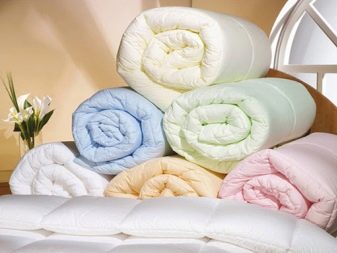
Views
Blankets come in both classic and advanced designs.
- The transformer is two-sided. The outer side must be durable (fleece, plush, wool). Internal - soft and warm (calico, satin). The product has a special filler that keeps heat inside - these are wool, down, synthetic winterizer.
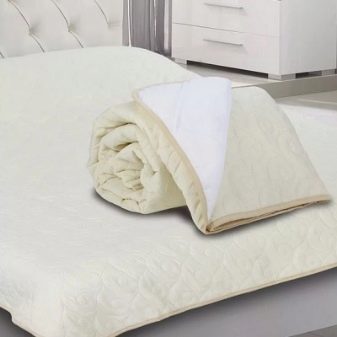
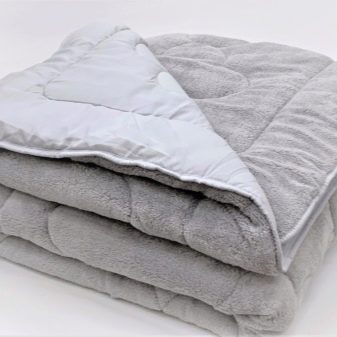
- All-season blankets on the buttons. This is ideal for saving space. The buttons are made of high quality materials, which increases the service life. It can be detached and used only one (summer or winter version). Easy to wash and dry.
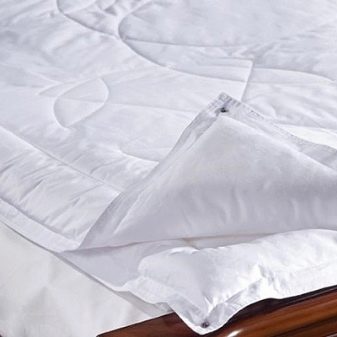
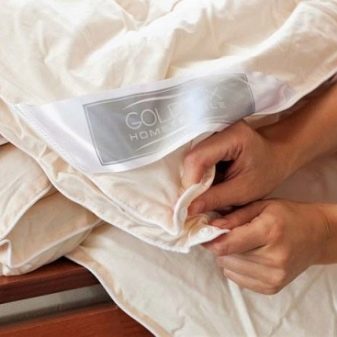
- Hooded - looks like a sleeping bag. From the outside, choose the material (fleece), and from the inside (wool, satin, synthetic winterizer). Feature - the blanket can be taken on hikes, insulates from all sides due to an individual berth.
The variety of products allows you to choose the right model for any person, regardless of income.
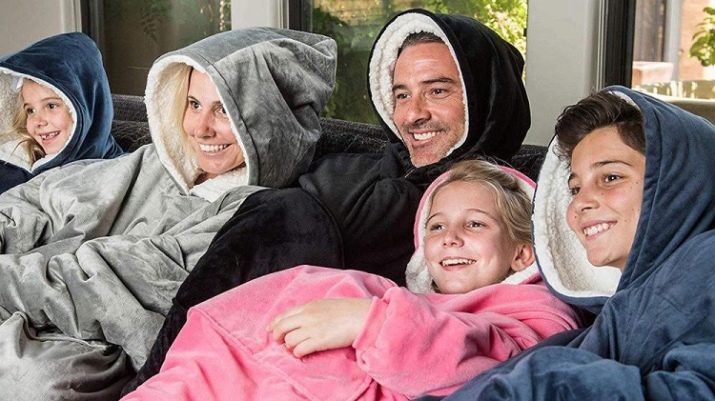
Quilted
A practical way to sew a product. The stitches are made in stripes, and a small distance is formed between them. But over time, the filler gets lost in lumps, which is why the appearance of the product deteriorates.
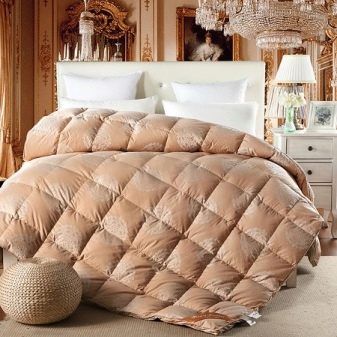
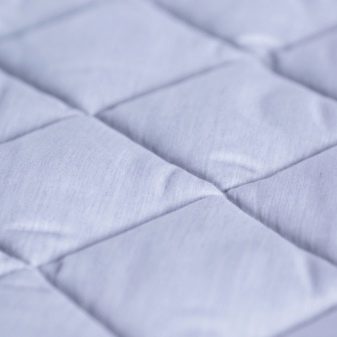
Cassette
The products are sewn from one-piece material, and the stitches are cassette (sector). They look like small bags of different sizes. The filler does not fall out of the sectors, does not get lost, keeps its shape. The product is washable.
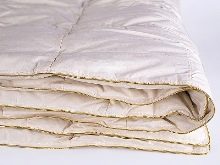
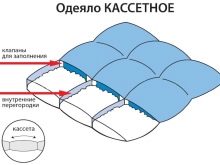

Excipients
Blanket fillers are made of natural and synthetic fibers.
- Natural - from wool and down. Woolen ones are made with the addition of sheep and camel wool. Wool has a specific smell. Camel and sheep wool are similar. The felt blanket is lightweight, well ventilated, but expensive. Lush downy - from goose, swan and duck feathers. The goose feather is airy, but it can cause allergies. Woolen is better at keeping warm, while down is more breathable.
- Silk - Mulberry and Tuss. The material is produced by silkworms and butterflies. Products absorb moisture.
- Synthetic - synthetic winterizer, ecofiber and holofiber. Products absorb and evaporate moisture. It is warm under it, but hot (poor air permeability).
- Pickey - the main filler is cotton. Also in the composition of nylon, viscose, woolen and semi-woolen fibers. The material has a special ornament: square, rhombus. The product does not lose its shape, wear-resistant, warm, does not wrinkle, and absorbs moisture. Cons - washing at low speeds, drying in a special machine.
- Jacquard - camel, sheep and goat wool. Pros of filling: lightness, heat retention, moisture wicking, durable.
- Fur - artificial and natural. Wear-resistant, warm and easy to clean.
- Microfiber is a man-made polyester and polyamide fabric. It is lightweight, breathable and moisture-absorbing. The material is used in the composition of a plush blanket (plush), it is recommended for children - soft and does not cause allergies. Requires dry cleaning, special care.
- Tencel - textile materialSuitable for sensitive people for a comfortable sleep. Textiles are breathable, gentle washing is possible.
- Antistress - bamboo fiber, rice and buckwheat husks. This is an all-season, medium-weight product. It helps with depression, insomnia, anxiety.
Light version of the product - all-season models. This is a double duvet, summer and winter versions are connected with buttons. It is important that the material is hypoallergenic - this is artificial fluff, silk, cotton, bamboo fiber, linen and tencel.
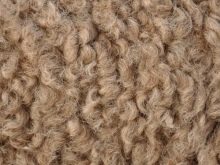
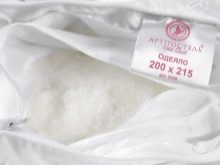
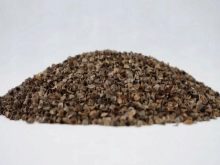
Bird fluff
Bird down is a popular animal-based filler.
Pros.
- Heat is trapped inside the product, providing thermoregulation.
- An allergic reaction is possible, since mites and bacteria accumulate in the fluff.
- The filler is well ventilated, creating a favorable microclimate.
- Ventilation is impaired. Absorbing almost 50% moisture, the filler dampens.
- Ease.
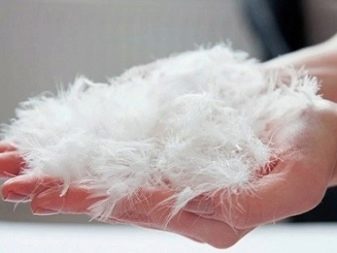
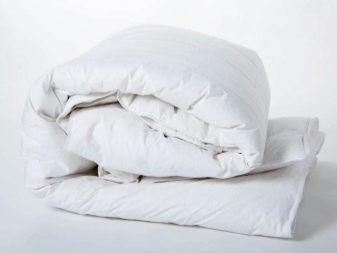
Minuses.
- High cost - due to the naturalness of the material.
- Down products do not lose their shape for a long time, they fold easily.
- Difficult care - down products require timely processing from germs and proper storage.
- The filler is not electrified.
- Long service life - up to 20 years.
The quality of products has been studied for a long time, and constant improvements have only improved it. Although the cost is high, the durability of use covers all the costs.

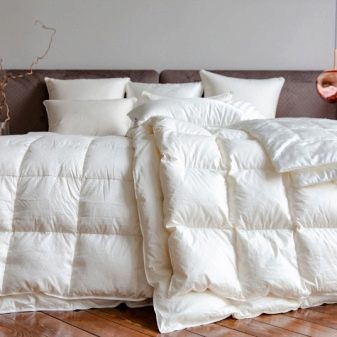
Wool
The material is made from sheepskin, alpaca, cashmere (mountain goat down). Camel and sheep wool blankets are denser than cashmere. The filling is warm, it is usually used in the cold season. From the pros: absorb moisture, good air permeability, therapeutic effect (relieves joint pain), durability. Minus - allergies are possible.
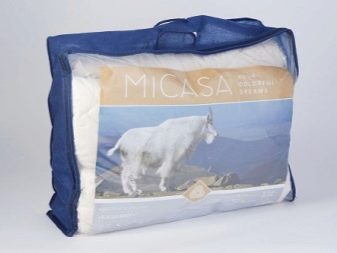

Polyester fiber
One of the fillers of products for a comfortable sleep. The advantage of the materials is hypoallergenicity, elasticity, lightness, durability. But the filler absorbs moisture and does not allow air to pass through.
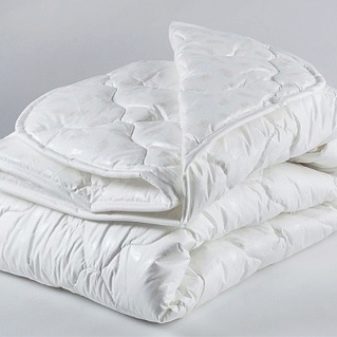
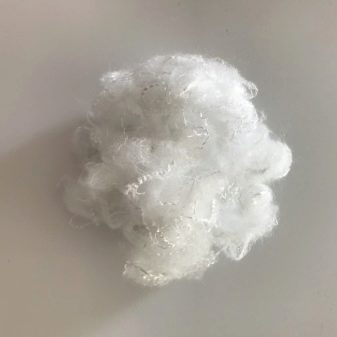
Bamboo fiber
This filler is new. It is made from bamboo leaves and stems. They are lightweight, breathable, absorb moisture, hypoallergenic. The product is used in the warm season. Over time, the natural filler wears out, but with additives, the service life is longer - synthetic winterizer (about 2 years), ecofiber (4 years).
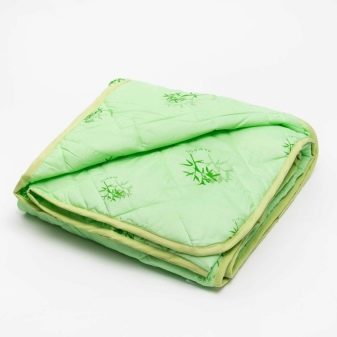

Eucalyptus fiber
The filler contains cellulose. The material is air permeable, elastic, does not cause allergies, regulates the temperature regime, lightweight, does not electrify. But eucalyptus fiber has a high cost, there must be special care. Few manufacturers use synthetics, the price is lower and easier to care for. But the content of plant fibers should be about 50%.
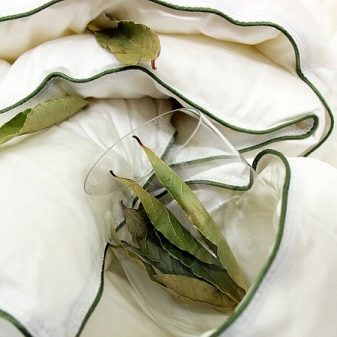
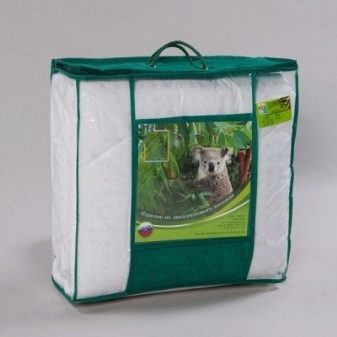
Cotton
It is made from cotton. This natural material is non-allergenic, moisture wicking, breathable, warm, soft. The service life of cotton products is 5 years, but natural fibers get knotted. This all-season blanket provides a comfortable sleep at any temperature. But the product is difficult to care for, weighs up to several kg. A muslin blanket is made from cotton - it is lighter than a cotton product, easy to clean. This is the only difference between muslin and cotton blankets.
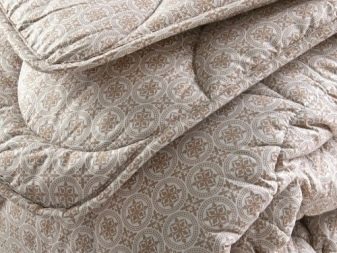

Linen
Linen fiber is elastic and durable (up to 7 years). Does not get lost in lumps, keeps its shape. Despite absorbing moisture, it remains dry. The product retains heat, but also allows air to pass through. This is an all season blanket. But the cost is too high, special care is required (delicate washing and drying).
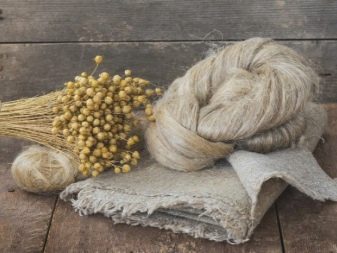
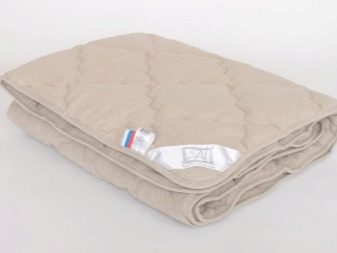
Silk
Refers to an elite model. The filler is made from silkworms. The fiber is lightweight, does not electrify, it can be summer and winter. Long-lasting, non-allergenic, breathable. The price for the product is high, special care is required.
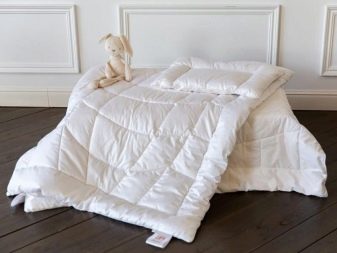
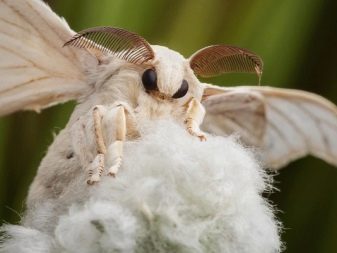
Cover fabric
Covers can extend the life of bedding. They come in natural and artificial materials. Artificial ones are made of polyester, microfiber. But the fabric is different in appearance - not so pleasant to the touch. Natural materials are made from cotton, satin, satin and silk, linen. Covers made from these materials are suitable for blankets:
- polyester - bamboo;
- microfiber - linen;
- linen - downy, woolen, polyester;
- atlas - double-sided, down, woolen;
- satin - silk, woolen, polyester;
- silk - silk, satin, woolen;
- cotton - satin, flannel, down, woolen, polyester.
Natural materials are chosen for production. The covers and the blankets themselves are made by machine, so the stitches and seams are always straight.

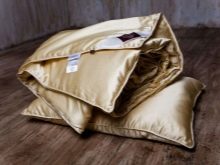
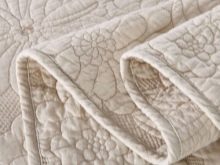
Dimensions (edit)
There are a variety of sizes of duvet bedding. It depends on the size of the bed, height and weight of the person, standards.
- One bed is designed for an adult up to 90 kg. Product dimensions: 130x180, 130x190, 140x190, 140x200.
- One and a half sleeping includes: 150x200, 160x220, 165x200. Suitable for two people of average weight.
- Double has the meanings: 200x220; 195x215; 175x205.
- Children are distinguished: for children under 12 years old - 75 x 100 and 100 x 150, for children under 17 years old: 143 x 210 to 160 x 230.
- Large sizes: Euro standard - 195x215, 200x220; euro-maxi - 220x240, 240x260.
For a voluminous and thick blanket, sizes are selected larger than average (with a margin). For thin and small - exactly in size.
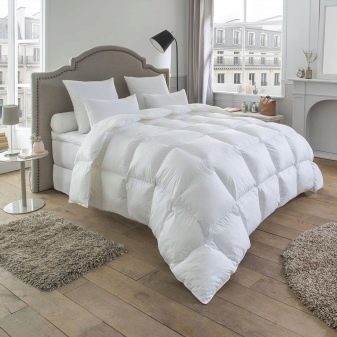
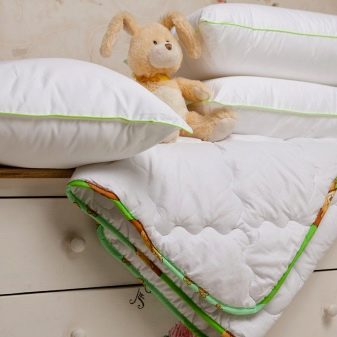
How to choose?
The choice of bedding for sleeping is best done with care, given:
- smell - no mold, no chemicals;
- weight and density (heavy - wool, the rest are light);
- shape: blankets should keep their shape or return it when folded in 20-30 seconds, the opposite phenomenon indicates the presence of additives in the fillers;
- softness - no foreign objects should be felt, only a homogeneous soft material (unscrupulous manufacturers add foam and plastic balls);
- cover - even, often white stitching, no filler fibers, good coloring;
- packaging - the label indicates the manufacturer, additional information in Russian, branded packaging.

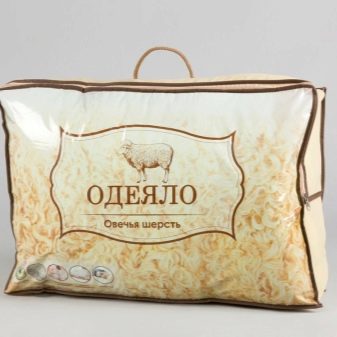
It is recommended to buy these blankets depending on the season.
- Winter - made of down, wool, polyester fiber, cassette sewing. These fillers keep warm well.
- Summer - a beautiful lightweight blanket made of polyester, bamboo and eucalyptus fibers will do. Summer shouldn't be warm.
- All-season - made of wool, down and synthetic fibers. The demi-season version provides coolness (in summer) and warmth (in cold weather).
- Double-sided - a single material or a composite model, which is connected by buttons and zippers. Ideal for mid-season and hot weather, because it can be used separately.
- For teenagers and children - the naturalness of the material is important. Expert advice: choose from fillers cotton, bamboo, eucalyptus, silk and linen - they are environmentally friendly.
For an adult, it is easier with a choice. You can make a purchase decision by referring to your preferences and wishes.
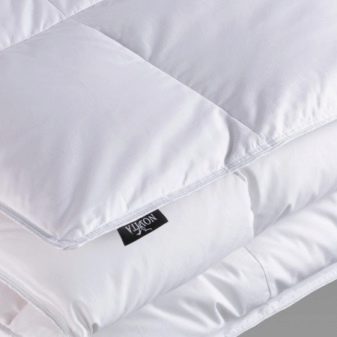
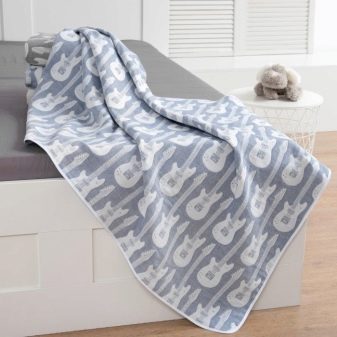
Manufacturers
The blanket is produced all over the world. Products from Russia and Western countries are somewhat different.
- Finnish production - hypoallergenic, high quality. Fillers for blankets are made of down, wool, cambric, silk. Most of the products are versatile and easy to clean.
- Turkish production - beautiful appearance, straight stitching, shape retention without lumps. Blankets are made of microfiber, cotton and silk. Filling: hallfiber, wool, down, bamboo fiber. The products are lightweight, high quality and durable.
- German production - all-season, summer and winter models, mostly premium class. The following are distinguished from the filler: down, silk, tencel, wool, cashmere, cotton, flax, bamboo and corn fibers.
- Russian production - from less expensive to luxury models. The composition of the filling is silk, cotton, linen, satin, wool, down, plant fibers. In addition, there are all-season buttons and zippers, separate summer and winter models.
Other countries are also manufacturers of blankets, but the most popular models are produced in the above countries.
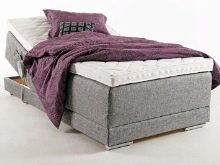
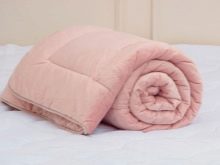
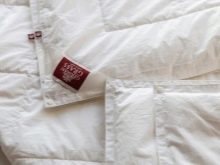
How to wash?
The type of washing is selected depending on the material. Cleaning should be done once a year (in spring - winter, in autumn - summer). Features of washing are indicated on the label: machine or hand, temperature conditions. In case of violation of the recommendations, damage to the product follows. Washable: fine cotton, wool, bamboo, eucalyptus and synthetic blankets. Machine wash rules:
- delicate treatment;
- temperature - 30 degrees;
- powder - 1/3 of the total;
- time - up to 30 minutes;
- put balls of foil into the drum;
- it is not worth drying in a drum (only cotton);
- after rinsing, hang evenly in the bathroom to eliminate excess liquid;
- straighten the lumps on wet material (if any) through the cover;
- drying on a rope or in a dryer, duration - 2-7 days.
Silk is washed by hand: add powder and a special agent for silk fabrics to the water, leave for 20 minutes. Stir slightly, drain, rinse in clean water. Leave to remove excess liquid. Dry without direct sunlight. Dry cleaning is used for delicate fabrics.
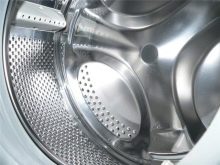
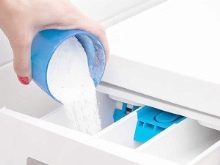
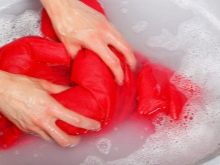
How to fold correctly?
There are sleeping accessories in every home. Because of this, people are looking for ways to fold the blankets properly. These are not just methods, but also saving space, increasing the service life. Revealed 2 ways to compactly fold large interior items. Vacuum is a special package that leaves no chance for bacteria and microbes due to the lack of air (favorable microclimate). Store only dry and clean sleeping products.If this rule is not followed, you can find an unpleasant smell inside - rot and mold. That is why the preparatory stage is so important: cleaning / washing (depending on the material), drying (hand or dry cleaning).
The finished item must be carefully packed in a vacuum bag, smoothing the product evenly in the corners, leaving no empty space. Tuck small and sharp elements (zipper, lock, buttons, belt, other jewelry) inside - this will prevent damage to the package.

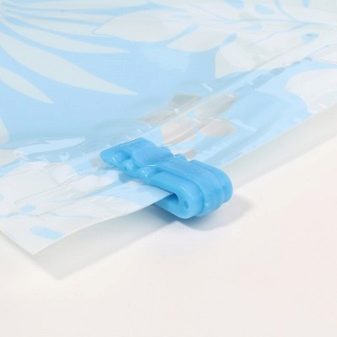
The process of closing a vacuum bag is as follows. Clamp the clip well by running it along the entire length of the seam of the sealed bag. For the best effect, it is necessary to perform a similar manipulation 5 times. To release all the air - remove the cap from the special hole, applying slight effort while scrolling to the side. Insert the hose from the vacuum cleaner into the open hole at minimum speed (if the model has such a function). Pressing your hand over the entire surface of the bag, release the air. This will allow air to escape completely from the vacuum bag space. Hardening of the object indicates the end of the process - you can close the valve.
This way you can fold the blanket neatly, saving space (no more than a pillow). Ready-made "pads" can be stored in a closet on a shelf, in a chest of drawers or in a special compartment inside the bed. There is another effective method of folding bulky things - the same "pillow", but without a vacuum.
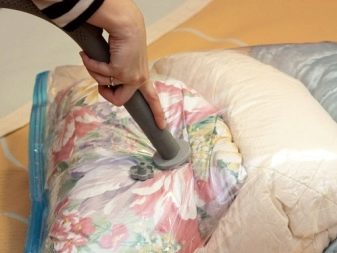
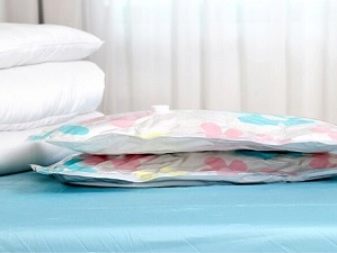
One piece of furniture can be easily replaced with another. This saves space and helps out when there are not enough pillows (when guests):
- roll up 1/4 of the blanket on the larger side;
- mentally divide the width into 3 equal parts, 1/3 on the left, tuck down;
- on the right side of it, alternating along the entire length - about 3 times;
- turn out the product, bending the free edge into the bag that appears.
With these simple tips, you can easily free up room space. The vacuum will prevent dust from settling and the development of germs, and the compact folding will ensure the appearance of a new piece of furniture.
